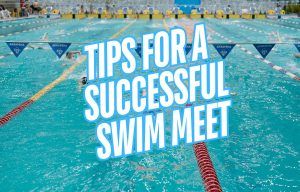
How to Prepare for a Successful Swim Meet
Ready to uncork some best times at your next swim meet? Here’s what you need to know to prepare for a swim meet.
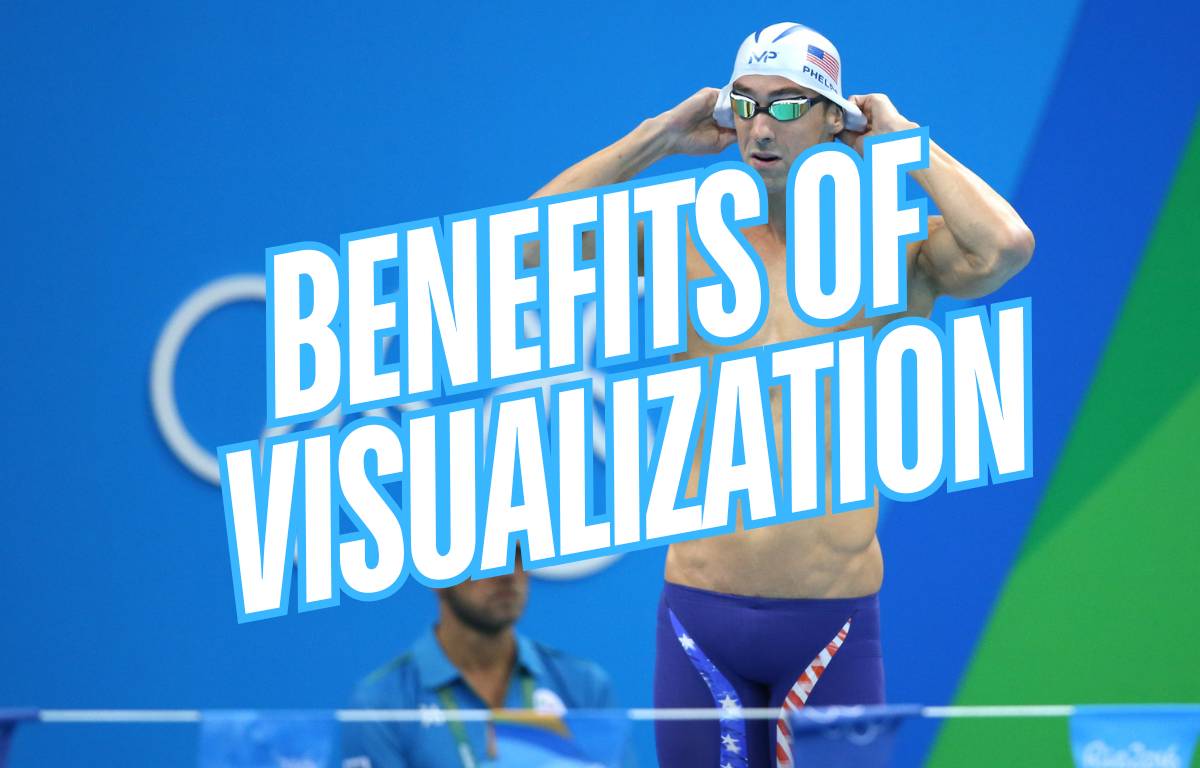
Wondering what visualization can do for your swimming? Here are some evidence-based benefits of visualization for swimmers for more confidence, less choking, and even better technique.
When you think of the tools that help swimmers dominate in the pool, what comes to mind? High-tech goggles, the perfect tech suit, maybe a world-class taper and shave down.
But one of the most effective performance tools isn’t in your swim bag—it’s under your swim cap and between your ears.
Visualization, also known as mental imagery or mental rehearsal, is a proven mental training skill for swimmers that can be used to improve a wide range of things in the pool.
Michael Phelps was a prolific user of visualization. Katie Ledecky, Adam Peaty, Cody Miller, and countless other Olympic champions used it as well.
And it’s not just a feel-good routine where you get to fantasize about golden performances—there’s real science behind how and why it works.
Whether you’re trying to karate-chop a personal best time, manage pre-race nerves, or fine-tune your technique, here are seven research-supported reasons visualization should be part of your training arsenal.
Let’s dive in.
The benefits of visualization for swimmers include:
Next, we’ll examine each benefit of visualization in greater detail and offer some tips to get started with this essential mental skill.
Self-confidence is everything in the pool. When we step up on the block and are feeling confident, we feel like we can take on the world. Visualization helps build the belief that you can—and will—perform at your best.
By using visualization to mentally rehearse successful races, strong underwaters, and powerful finishes, you program your brain to deliver success in the water. Over time, this mental rehearsal becomes a form of self-coaching that reinforces trust in your training and abilities, leading to more confidence and faster swimming.
A study by Callow, Hardy, and Hall (2001) found that using motivational imagery increased athletes’ sport-specific confidence. The more vivid and task-specific the visualization, the more powerful the confidence effect.
Tip: Each night, spend 5-10 minutes visualizing your ideal race from start to finish every night for a week. Feel the water, hear the starter’s beep, and imagine yourself nailing each turn and finish. Confidence comes from experience, and mental rehearsal is one more rep to add to your confidence stockpile.
There is nothing worse than “choking” on race day. Weeks, months, even years of hard work thrown away because we are overcome by the pressure of the moment.
Even the best swimmers on the planet feel nerves before a big race. Difference is that they are able to manage those nerves and channel them as fuel.
Visualization can act like a dress rehearsal for the mind—allowing you to “experience” the pressure in a controlled way before race day arrives.
“It’s weird because I didn’t really get that nervous during the Olympics. I’d swum that race a thousand times in my head.” – Adam Peaty
By feeling the emotions and pressure of the moment repeatedly ahead of time—including the butterflies, sweaty palms, last moment doubts and uncertainties—you desensitize yourself to the detrimental effects of stress and pressure.
When the pressure builds, instead of panicking or choking and succumbing to the moment, it will feel like just another race.
A study (Lin et al., 2021) with 55 competitive fin swimmers performed six months of visualization sessions (twice per week).
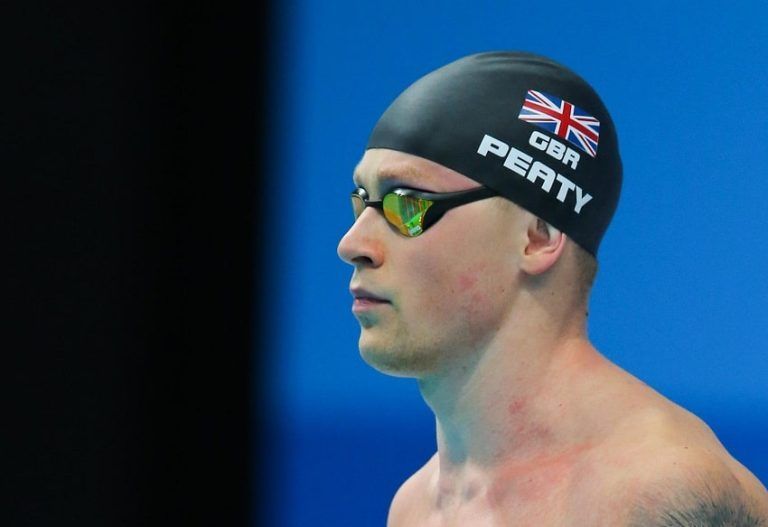
By the end, they not only beat personal bests and achieved more of their goals in the pool, but they saw significantly fewer negative physical symptoms associated with performance anxiety, such as stomach tension, muscle tightness, and restlessness. Swimmers were more relaxed and less anxious.
Swimmers often struggle with the novel experience of competition, which can be much more intense and pressure-filled compared to the safe psychological confines of swim training.
Use visualization to build pressure reps so that you can step on the block and know that your best swim is in front of you.
Tip: Visualize yourself behind the block for your best event at this season’s biggest meet. In those lonely moments, hear the crowd, feel the butterflies—and then imagine yourself breathing deeply, relaxing your shoulders, and stepping onto the block with calm, confident, and focused control.
In a sport measured by tenths and hundredths of a second, the ability to block out distractions and dial into the moment is essential.
Visualization can help swimmers mentally rehearse key race cues—like pace control, stroke tempo, underwater dolphin kick count—so they stay laser-focused when it matters most.
By mentally rehearsing where to place your attention at each stage of the race, you reduce the chances of being thrown off by noise, fatigue, or doubt.
Sports psychologist Aidan Moran, in his book The Psychology of Concentration in Sport Performers: A Cognitive Analysis showed that visualization significantly strengthens attentional control, helping athletes stay locked in on performance-relevant cues under pressure.
Which makes sense: Visualization in itself is a highly focused activity that requires your full imagination and attention to perform correctly, leading to more focus in the water.
Tip: Pick one technical cue (like “kick from the trunk” or “grab water in the catch”) and visualize yourself executing it perfectly during your main set or race. Repeat that mental cue to sharpen focus during real swims.
Swimmers improve velocity by two mechanisms in the water: Increase power and decrease drag. The latter is why swimmers should constantly be focused on refining and improving their technique. Efficient technique helps you move through the water with less effort and more speed.
Visualization is a dryland tool for technique optimization. Visualization activates the same brain regions involved in physical movement, reinforcing neural pathways for better stroke mechanics.
This means that even when you’re out of the water—resting, tapering, drydocked or recovering—you can continue refining your technique and motor memory through visualization.
Guillot and Collet (2008) conducted a meta-analysis showing that visualization improves both learning and execution of motor skills, especially when combined with physical practice.
Tip: Close your eyes and imagine your stroke from a first-person perspective. Focus on the feel of the water during your catch, the timing of your kick, and the rotation of your shoulders and hips. Then use a third-person perspective, “watching” yourself execute the skill flawlessly. The more specific your imagery, the better.
Injuries can be super frustrating, but visualization gives swimmers a way to stay mentally sharp and connected to the sport.
Taking some time each day to visualize proper stroke mechanics, turns, and races can help maintain the neuromuscular connections essential to performance, even when you’re out of the pool.
Visualization can even be used to recover faster.
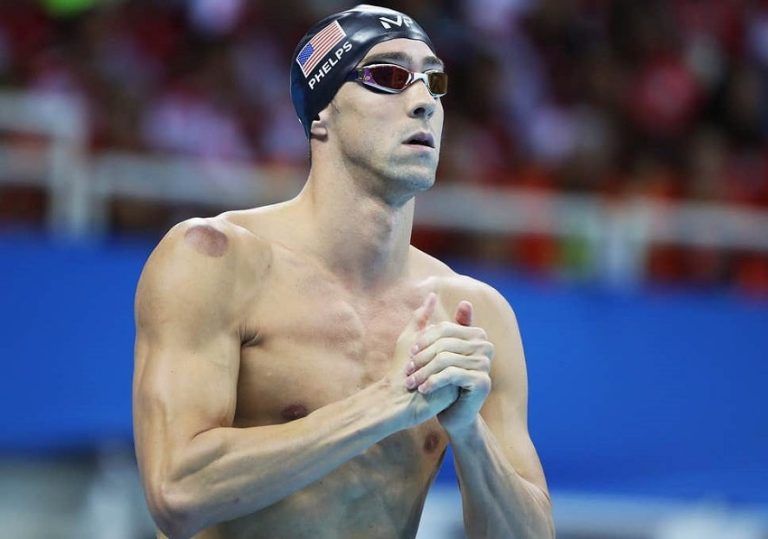
A study by Cupal and Brewer (2001) showed that injured athletes who used guided imagery during rehabilitation experienced faster recovery, reduced pain, and lower anxiety levels.
Visualization can be used for just about every aspect of swimming better.
But it can especially be deployed to help you work through injuries, reducing the psychological stress of being sidelined and making a smoother transition back into training and competition.
Tip: If you’re injured, visualize doing your usual main set, including warm-up, pace work, and cooldown. Add emotional imagery, like the satisfaction of a solid training day, to keep your motivation high and help you hit the water running when you are cleared to swim again.
Visualization is a skill that allows you to “preview” competitive situations before they happen.
Whether it’s adjusting stroke rate at the 35-meter mark or reacting to an early lead from the next lane, mental rehearsal gives you the playbook for how to respond.
Elite swimmers often use visualization to map out ideal pacing, anticipate opponents’ strategies, and mentally simulate close finishes—all of which builds readiness and calm under pressure.
“When I would visualize, it would be what you want it to be, what you don’t want it to be, what it could be. You are always ready for whatever comes your way.” – Michael Phelps
A 2017 study by Blankert and Hamstra demonstrated that athletes who used visualization in their preparation to mentally rehearse race-day scenarios, from emotional buildup to technical execution, experienced better competitive outcomes.
Use visualization not just to swim a desired result, but the build-up of the day, including those moments when it’s just you and your thoughts behind the block, your building focus and intensity during the meet warm-up, and dealing with random moments of adversity on race day.
Tip: In the weeks leading up to competition, mentally walk through race day. The loosey goosey drive to the pool, warming up with intent, doing last minute visualizations, completing each stage of your pre-race routine. The more you rehearse it, and the more times you “experience” the big moment, the more natural it will be for you to excel when the real moment happens.
Visualization isn’t just for elite swimmers or Olympic champions, even though countless Olympic legends from Michael Phelps to Adam Peaty frequently used visualization for race day success.
It’s a powerful tool for any swimmer who wants to level up their mental game. And like any skill, it takes practice and consistency, but the payoff is real: stronger confidence, sharper focus, and better performance when it counts.
If you’re not already visualizing as part of your training, now’s the time to start.
Set yourself some goals.
Visualize yourself achieving them.
And then get up on the block and do the real thing.
Visualization is just one piece of the mental game. Throw in powerful self-confidence, managing pre-race nerves, pre-race routines, attentional control, dealing with perfectionism—these are all skills that can be trained, just like your starts and turns.
For swimmers serious about unlocking their full potential in the water, my mental training workbook Conquer the Pool: The Swimmer’s Ultimate Guide for a High-Performance Mindset, is your next step.
Made with the feedback of 200+ Olympic, World, and NCAA winning swimmers and coaches, the book is packed with step-by-step strategies and advice for helping you unlock your mind so that the body can swim to its potential.
Whether you are stuck in a plateau, ready to take things to the next level, or preparing for the Big Meet, Conquer the Pool gives you the mental edge to swim with confidence.


Olivier Poirier-Leroy Olivier Poirier-Leroy is the founder of YourSwimLog.com. He is an author, former national level swimmer, two-time Olympic Trials qualifier, and swim coach.
✅ Free shipping on Orders over $49
✅ Price Match Guarantee
✅ Best selection of gear for training and competition
✅ Fast and Easy Returns

“This is the best book I have ever seen concerning mental training.” — Ray Benecki, Head Coach, The FISH Swim Team


Ready to uncork some best times at your next swim meet? Here’s what you need to know to prepare for a swim meet.
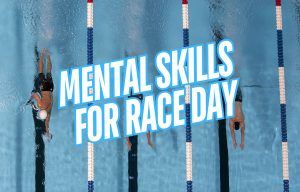
The right mental skills can help you unlock faster swimming on race day. Here is a look at the right skills to use for competition.
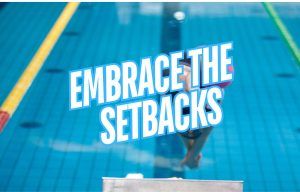
Frustrated with setbacks in the pool? Here are some tips for improving your ability to embrace setbacks and swim faster.
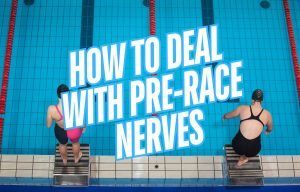
Struggling to swim fast under pressure? Here are some tips for how to manage pre-race nerves on race day.

Swimmers often find themselves stuck with doubt when it comes to doing tough things in the water. Here’s a simple question to ask when you find doubt and uncertainty stopping you from excellence.
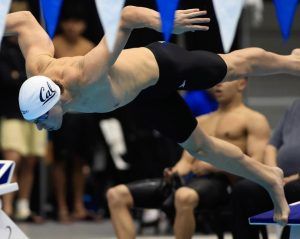
Looking to take your mindset and swimming to the next level? Here are five things you can learn from Jack Alexy, one of the fastest freestylers on the planet.
SITE
SHOP
GUIDES

LANE 6 PUBLISHING LLC © 2012-2025
Join 33,000+ swimmers and swim coaches learning what it takes to swim faster.
Technique tips, training research, mental training skills, and lessons and advice from the best swimmers and coaches on the planet.
No Spam, Ever. Unsubscribe anytime.
